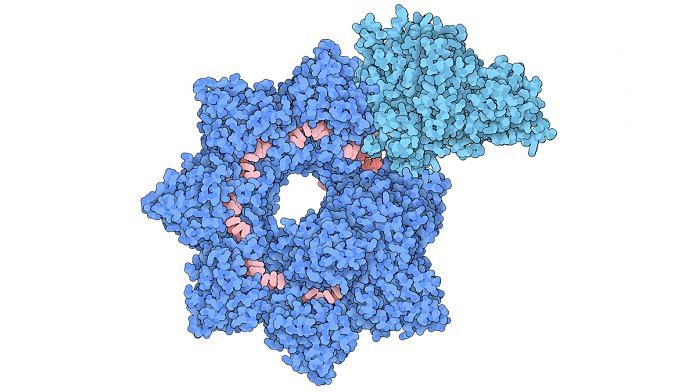New Delhi: Scientists at the Columbia University have captured the first-ever images of a new gene-editing tool that can accurately insert large DNA sequences in a genome. The tool, called INTEGRATE, can be used for safer genetic therapies in the future.
In a study, published in Nature Wednesday, researchers said they used cryo-electron microscopy — the technique which earned its inventors the Nobel Prize in 2017 — to freeze a gene-editing complex in action, revealing high-resolution details about how INTEGRATE works.
INTEGRATE was developed after Columbia University researchers discovered a unique “jumping gene” in Vibrio cholerae bacteria that could insert large genetic payloads in a genome without cutting the DNA.
INTEGRATE stands for “Insertion of transposable elements by guide RNA-assisted targeting.”
The new images explain the biology behind INTEGRATE with incredible molecular details. These details will help scientists improve the system by guiding protein engineering efforts, said Sam Sternberg, an assistant professor at Columbia University, in a statement.
Until now, researchers across the world have been using the gene-editing tool known as CRISPR-Cas9 to make modifications to DNA sequences. CRISPR has been hailed as a way forward to treat genetic diseases by deleting ‘errors’ or mutations in disease-causing genetic codes.
CRISPR works by making precise cuts at a target DNA but creates gap in the process. This gap is repaired by the host cell’s own machinery. However, controlling this repair process is a major challenge as it leads to undesired gene edits.
Existing tools also cannot accurately insert large genetic sequences.
Also read: CERN scientist Archana Sharma says Indian girls need more female role models in STEM
INTEGRATE may enable new gene-editing opportunities
Earlier this year, scientists had demonstrated ways of leveraging the INTEGRATE for targeted DNA insertions in bacterial cells.
The new images revealed that the INTEGRATE complex is made up of two main sections which are arranged in a helical filament. The larger portion, called Cascade, winds around and carries a guide RNA which is used to ‘scan’ a cell for a matching sequence in DNA.
Once it locates and binds the target sequence, it threads the DNA strand through the TniQ “transposition” proteins that sit on the end of the complex and recruit other enzymes which help modify the DNA.
With INTEGRATE, a set of enzymes can carry out the entire DNA integration process. The technique may enable a vast range of new gene-editing opportunities, said the scientists.
Many biotechnology products, including gene and cell therapies, engineered crops, and biologics, require precise integration of large genetic sequences.
The INTEGRATE technology offers a fresh new approach with the same programmability and ease-of-use that a CRISPR-Cas9 has but without the adverse effects associated with DNA cuts.
Also read: Team led by Indian-origin scientist finds way to better predict disease risk from DNA codes






